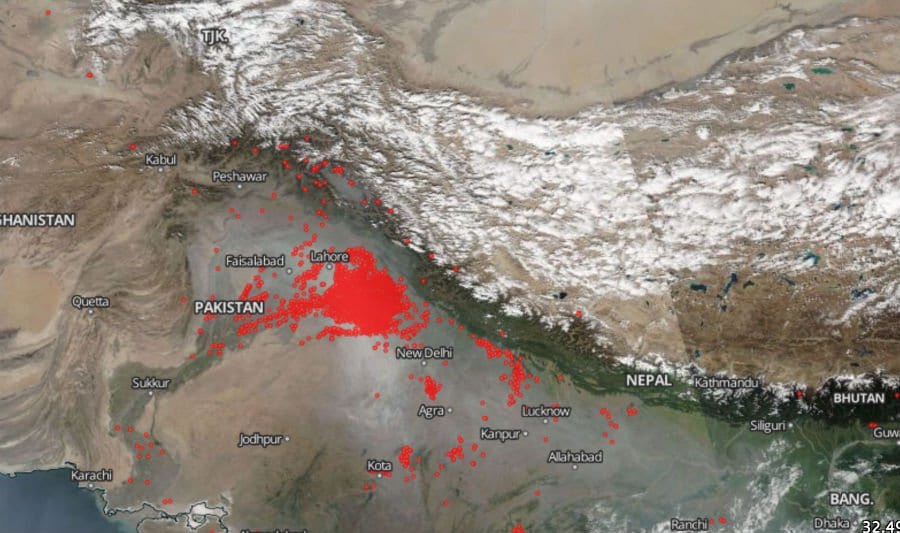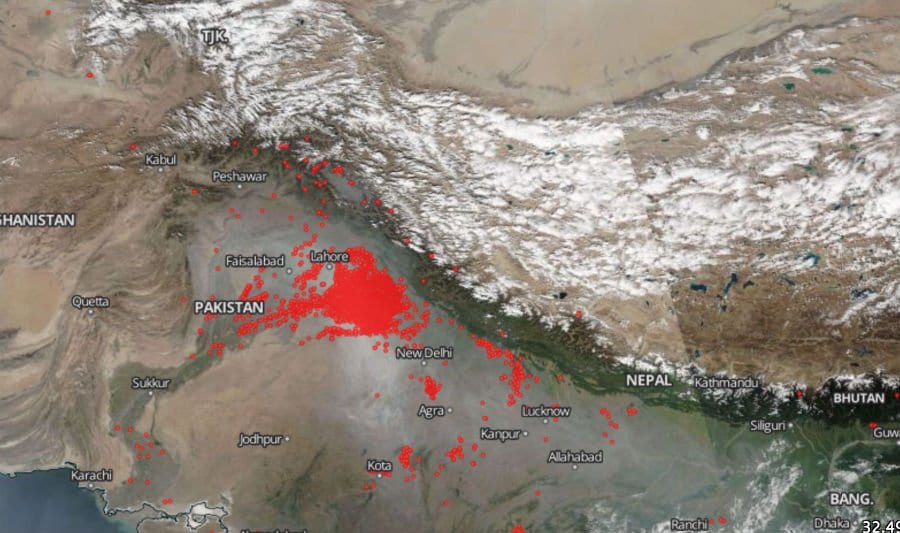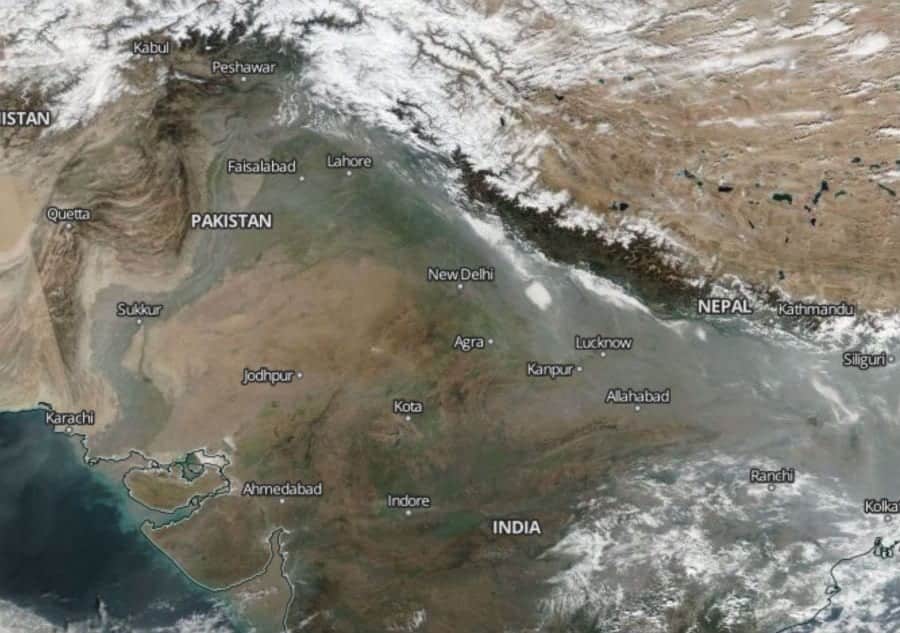Today, New Delhi is considered the most polluted city in the world reaching five times more than the unhealthy limit of the air quality index as set by the U.S. government. Even Delhi’s chief minister Arvind Kejriwal has compared the city to a “gas chamber”. “Pollution has increased to an extent that outdoors in Delhi are resembling a gas chamber,” Kejriwal had told a media conference over the weekend. NASA’s Worldview tool posted some visible satellite images that shows persistent smog across northern India since late October. This coincides with the beginning of winter weather patterns that often bring more stationary air masses to the region. As the pollution levels are so high, the Indian authorities as a precautionary measure have shut schools and construction sites this week. Officials have also warned that the number of vehicles allowed on the streets may be restricted if the situation does not improve. The smog poses serious public health threats, including causing or aggravating heart disease, and increasing cancer risks and elevating mortality among more vulnerable populations. The Center for Science and Environment, a Delhi-based research and lobbying organization, said government data shows that the smog that has covered the city for the last week is the worst in 17 years. In the NASA Worldview satellite image below from November 1, one can see that there is a clear channel of smog running from the city of Faisalabad down to Kota, with New Delhi in the absolute thick of it:
So, what are the reasons that caused smog? Kejriwal suggested that a “large scale” influx of smoke from the neighbouring regions of Punjab and Haryana has increased the smog in New Delhi, telling the media, “[T]he biggest reason seems to be burning of stubble in agricultural fields in Haryana and Punjab in huge quantity.” Officials have also blamed the recent Diwali fireworks in New Delhi as part of the reason for why the city’s pollution levels hit “severe” levels over the weekend and on Monday. Here you can see what NASA describes as “fires and thermal anomalies” in those areas on November 1:
“Although India’s environmental court, the National Green Tribunal, told the government last year to stop farmers from burning the straw left over from their rice harvests, NASA satellite images in recent weeks have shown virtually no abatement,” reports The New York Times. “Farmers are continuing to burn most of the leftover straw – an estimated 32 million tons – to make room to plant their winter wheat crop.” For reference, here’s the same area on 13 December 2015:
In addition, weather patterns have helped to trap pollutants in the lower atmosphere. “Higher air pollution levels may take days to settle,” said Dr. Surya Kant Tripathi, who heads the pulmonary medicine department at King George’s Medical University in Lucknow, the capital of Uttar Pradesh. The researchers typically take two types of particles into consideration while measuring air pollution: PM10 is particulate matter 10 micrometres (?m) or less in diameter, and PM2.5 is particulate matter 2.5 ?m or less in diameter. Both the kinds of pollution are measured by the average amount per cubic metre, and according to data from the System of Air Quality and Weather Forecasting and Research (SAFAR), New Delhi today saw PM10 hit 876 ?m/m3, and PM2.5 hit 680 ?m/m3 earlier this week. To put that into view, the very upper limits for “safe” levels for PM10 and PM2.5 are considered to be 100 ?g/m3 and 60 ?g/m3 respectively. Thankfully, conditions for New Delhi are improving, and they are currently at 474 ?m/m3 for PM10 and 295 ?m/m3 for PM2.5. To improve the air pollution, New Delhi has also ordered the temporary closure of a nearby coal-burning power plant, as well as construction and demolition sites accused for sending huge clouds of fine dust particles into the air. It also ordered that roads be soaked with water to settle dust, and banned diesel-powered electricity generators for 10 days except at hospitals and mobile network towers. Hopefully, things will ease up slightly for the people of New Delhi as the city moves out of winter. Also, the Indian government is looking to drastically expand the use of cleaner, renewable energy sources such as solar and wind power as a way to fight air pollution as well as global warming. Source: Sciencealert


